by Specialdocs Consultants, LLC | Sep 25, 2018 | Medications, Patient News

The New Approach to Pain Management: Fewer Pills, Lower Doses, More Vigilance
It’s hard to imagine a medical crisis more widely discussed, dissected and debated in the last two years than opioid abuse. As a result, clear action steps have been taken, including retooling of the 2016 guidelines for opioid-prescribing protocols – dosage recommendations, follow up assessments and ongoing monitoring were reconsidered and adjusted. In short, for patients with chronic pain not from cancer, non-pharmacological treatment and non-opioid medications should be evaluated first, and opioids used for pain management only when:
- other alternative therapies have not provided sufficient relief, and
- pain is adversely affecting a patient’s function and/or quality of life, and
- potential benefits of opioid therapy outweigh
Following are details on the newest developments, and how they may impact the way you’re treated for pain, from hospital bed to physician office.
Minimize and customize dosage. Not surprisingly, the dosage recommendations for exercising caution are lower than in earlier guidelines, beginning with even relatively low doses (20-50 morphine milligram equivalents (MME) per day). The lowest effective dose, for the shortest period needed, will be used to treat acute pain. In most cases, even pain following surgery does not require opioids for more than three days. Several high-profile institutions have changed their opioid prescribing guidelines following surgery.
At Johns Hopkins, a panel of health care providers developed recommendations for the number of five-milligram oxycodone pills needed after almost two dozen common procedures, finding that some required none, while the maximum of 20 pills was appropriate for others. The prescribing limits were designed to help prevent patients from receiving unnecessary opioid pills after surgery and ultimately face a one-in-16 risk of becoming a long-term user.
“Prescriptions for pain meds after surgery should be custom tailored to the operation and a patient’s needs and goals, but the hope is that these guidelines will help reset ‘defaults’ that have been dangerously high for too long,” the study’s author reported in a recent Journal of the American College of Surgeons.
An open discussion. It is now acknowledged that opioids present a risk to all patients, and risks must be clearly presented when starting therapy. These range from common (constipation, nausea) to serious (respiratory problems, opioid use disorder, overdose).
Establish realistic treatment goals. It’s essential to realize there’s no cure for chronic pain, but work toward pain relief to improve function and quality of life. “SMART” goals – specific, measurable, attainable, relevant and time-limited – should be set at the start to determine end points and be continually reassessed.
Continual monitoring. Opioids should only be continued after confirming that clinically meaningful improvements in pain and function were realized without significant risks or harm. In regular checks, patients will be asked to rank their pain, and level of interference with their enjoyment of life and general activity. A 30 percent improvement from baseline scores would be needed to continue the therapy. Reassessments are recommended within a few weeks after starting, and at least every three months throughout the course of treatment.
Not recommended for elderly patients. A body of evidence shows possible harm from long-term opioid use in older patients, who metabolize medications more slowly and so may be prone to side effects such as respiratory and cognitive impairment. UCLA Comprehensive Pain Center experts advise a multidisciplinary approach using psychological support, physical therapy and other complementary therapies.
Proper disposal of unused opioids. Noting that a large part of the opioid abuse crisis was spurred by people taking medications not prescribed to them, new guidelines emphasize not leaving unused pills in the medicine cabinet “just in case.” Patients are advised to dispose of them as quickly and appropriately as possible.
New approaches to addiction. According to a recent editorial in Mayo Clinic Proceedings, looking beyond the “supply side” issue to target the “demand” side of opioid use is critical to addressing why patients were initially drawn to using opioids. The authors recommend screening for depression and other psychiatric disorders which are often the impetus for patients to over-use opioids. Other studies posit that as many as 65 percent of overdoses reported at poison control centers were actually suicide attempts, underscoring the need for comprehensive psychological evaluation and treatment.
Optimize use of non-opioid therapies. A growing list of options includes:
- Acetaminophen (Tylenol®) or ibuprofen (Advil®)
- Muscle relaxants
- Anti-inflammatories
- Cognitive behavioral therapy – a psychological, goal-directed approach in which patients learn how to modify physical, behavioral, and emotional triggers of pain and stress
- Exercise therapy, including physical therapy
- Medications for depression or seizures
- Interventional therapies (injections)
- Exercise and weight loss
- Alternative therapies such as acupuncture
Fast Facts; Did You Know?
70–80% – 70-80% Percentage of opioid pills prescribed for pain management after surgery not used by patients
Source: Johns Hopkins
The post Pain Management: The New Approach appeared first on Specialdocs Consultants.
by Specialdocs Consultants, LLC | Sep 25, 2018 | Patient News, Wellness

Your Best Shot at a Flu-Free Winter
Last year’s flu season was severe in most parts of the country and left many wondering why the flu vaccine hadn’t performed more effectively. However, it remains our best line of defense for averting and lessening the severity of this common but potentially deadly illness. Below we clear up some of the most common misconceptions about the flu vaccine…and continue to strongly recommend that you make sure to get your shot of prevention this fall.
Myth: I can get the flu from a flu shot.
A flu shot will not give you the flu. The viral strains in injectable influenza vaccine are inactive and biologically unable to cause illness. The one exception is the vaccine administered in nose spray form.
Myth: The vaccine didn’t work last year, so it must be losing potency.
The amount of protection provided by flu vaccines varies by influenza virus type, and how well matched vaccine viruses are to the circulating flu viruses. Last year’s results, while lower than average, still meant that the risk of getting sick from flu was reduced by a third. This year, both types of vaccines, trivalent (protection against influenza A H1N1 and H3N2 viruses and one type of influenza B virus) and quadrivalent (four component protection to protect against two types of B viruses), have been modified to better anticipate the season’s circulating flu viruses.
Myth: The flu vaccine will also prevent other viruses.
Flu vaccines do not protect against infection and illness caused by other viruses, such as rhinovirus (one cause of the common cold) and respiratory syncytial virus (RSV), despite their flu-like symptoms.
Myth: Flu vaccines are not appropriate for people over 65, who have weaker immune systems than younger people.
Although immune responses may be lower in the elderly, flu vaccine effectiveness has been similar in most flu seasons among older adults and those with chronic health conditions compared to younger, healthy adults. It’s also important to remember that people 65 and older are at increased risk of serious illness, hospitalization and death from the flu, making the flu vaccination especially important for this age group.
Myth: There are no flu vaccines just for people over 65.
There are two vaccines designed specifically to help enhance the effectiveness in adults older than 65. A high dose vaccine, containing four times the amount of antigen as the regular flu shot, and the adjuvanted flu vaccine, which creates a stronger immune response in the elderly.
Myth: The vaccine is less effective if received every year.
Multiple studies have shown that while immune responses to vaccination may be higher among people not previously vaccinated, those who are repeatedly vaccinated still have increased immune responses and are provided protection against the flu.
Myth: I should wait as late as possible to get immunized so it lasts throughout the season.
The CDC and Advisory Committee on Immunization Practices (ACIP) recommends that you get a flu vaccination in early fall to ensure you’re protected before flu season begins. However, as long as flu viruses are circulating, it’s not too late. Receiving a vaccination in December or January can still protect you because flu season often peaks after January and can last as late as May.
Myth: Getting sick with the flu is not all that serious.
In the U.S., 36,000 people die and more than 200,000 are hospitalized each year because of the flu. Children, the elderly and people with certain chronic conditions (heart disease, lung disease, asthma or diabetes) are at higher risk for complications such as pneumonia. For everyone, flu symptoms, including fever, headaches, cough, sore throat, nasal congestion, extreme tiredness and body aches, can disrupt work and social life for up to two weeks. The flu vaccine has proven effective in both preventing flu and in lessening the severity of symptoms if flu should occur, thereby reducing the risk of hospitalization and admission to the intensive care unit.
Did You Know?
Up to 60% – Decrease in the risk of flu during seasons when most circulating flu viruses are well matched to the flu vaccine. Put another way, in 2016-17, the vaccine prevented an estimated 5.29 million illnesses, 2.64 million medical visits and 84,700 hospitalizations associated with flu.
79% / 52% – Reduction in hospitalization for people with diabetes (79%) or chronic lung disease (52%) as a result of receiving the flu vaccine.
Sources: Vaccine Journal August 2018, Centers for Disease Control, Harvard Health
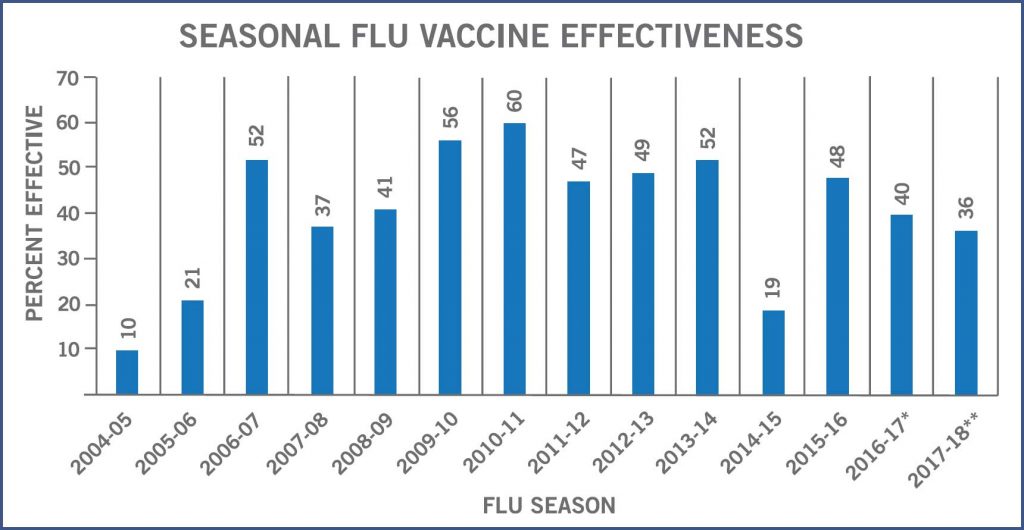
The post Staying Healthy During the Flu Season appeared first on Specialdocs Consultants.
by Specialdocs Consultants, LLC | Jan 16, 2018 | Medical Conditions, Patient News
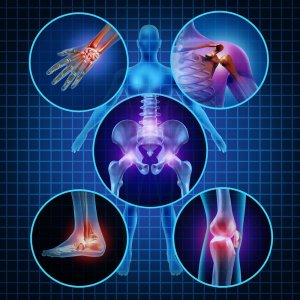
The Enemy Within
Autoimmune Disease, a condition that is thought to have tripled in prevalence over the last 50 years, impacting over 23 million people, could justifiably be seen as an epidemic, or at least, a growing health concern. Autoimmune diseases are not often thought of in that way because they manifest as 80+ different illnesses that nevertheless share the same root cause: a malfunctioning immune system that mistakenly attacks its own tissues. Virtually every human organ system can be impacted: the brain and spinal cord in multiple sclerosis, the skin in psoriasis, the joints in rheumatoid arthritis, the intestines in Crohn’s disease and ulcerative colitis, the insulin-producing cells in the pancreas in Type 1 diabetes, the thyroid in Hashimoto’s disease, among others.
Ironically, 100 years ago, Nobel Prize-winning immunologist Paul Ehrlich, MD, was openly skeptical of a concept in which the body turns on itself, calling it “horror autotoxicus” (literally, the horror of self-toxicity). That set back acceptance of autoimmunity another half century, according to today’s leading neuro-immunologists. Now we are beginning to recognize the pervasiveness of autoimmune disease and develop therapies based on new research into its complex causes.
Notably, the gut, which houses 80 percent of the immune system, has come under increased scrutiny for the role it can play in causing disease. One theory posits that a ‘leaky gut’ may allow undigested food particles, microbes and toxins to enter the blood stream, and trigger inflammation that goes on to disrupt the proper functioning of the immune system.
There is also a growing consensus that these diseases result from complex interactions between genetic and environmental factors. Autoimmune disease is commonly clustered in families, but may affect different organs. For example, a mother may develop rheumatoid arthritis while her daughter copes with juvenile diabetes, her sister has Hashimoto’s thyroiditis, and her grandmother deals with Graves’ disease. Environment and lifestyle may contribute to the increased incidence of these diseases, including chronic stress.
For the many living with an autoimmune condition, there is hope in the form of new medications, advanced treatments and genuine breakthroughs in the precision medicine approach. Experts predict substantial advances in the next decade, fueled by more than 310 medicines and vaccines for autoimmune diseases already in clinical trials or awaiting review by the Food and Drug Administration (FDA). Options go well beyond simply relieving symptoms or replacing substances destroyed by the disease, including:
- Therapies to suppress the immune system and preserve organ function, such as methotrexate, used to treat cancer, now also successfully used for rheumatoid arthritis and several other autoimmune diseases.
- Real progress in biologics, which target specific enzymes and proteins. Monoclonal antibody medicines are being used to block inflammation in rheumatoid arthritis, preventing irreversible joint damage and enabling remission; to inhibit the activity of proteins implicated in Crohn’s and colitis and systemic lupus erythematosus; and are newly approved by the FDA to neutralize inflammatory processes linked to psoriasis.
Running on a parallel and complementary path are natural methods, which continue to gain traction. Areas under investigation include: reducing foods high in sugar and saturated fat, practicing de-stressing techniques, lowering the toxic burden caused by constant exposure to environmental factors and restoring intestinal health with a diet that includes prebiotic and probiotic foods.
The post Autoimmune Disease on the Rise appeared first on Specialdocs Consultants.
by Specialdocs Consultants, LLC | Jan 9, 2018 | Nutrition, Patient News
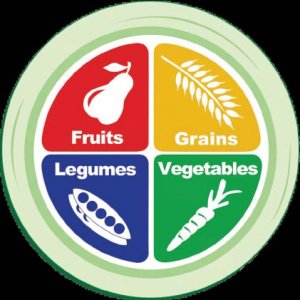
Plant the Seeds of Healthy Eating
Plant-based diet proponents are growing at a rapid clip in the US, buoyed by ongoing reports that following the regimen faithfully can result in a multitude of health benefits, ranging from increased energy and elevated mood to lower risks of diabetes, high blood pressure and heart disease. The abundance of antioxidants in whole plant foods may also help prevent or slow certain cancers. In addition, plant-based diets are more environmentally sustainable than diets rich in animal products because they use fewer natural resources.
“Plant-based nutrition is superior when it comes to most diseases.”
– Dr. Kim Williams, former president of the American College of Cardiology
Multiple studies point to the preponderance of refined, processed foods, loaded with added sugars and salts that comprise the standard American diet, and the link to disease. Choosing whole foods instead of refined grains and sugary fruit juices is key, and the Physicians Committee for Responsible Medicine illustrates the concept with these four ‘new’ food groups on the nutritional plate:
- Fruits are rich in fiber, vitamin C, and betacarotene. Also include fruits high in vitamin C, such as citrus fruits, melons, and strawberries. Choose whole fruit over fruit juices, which don’t contain much fiber.
- Vegetables provide vitamin C, betacarotene, riboflavin, iron, calcium, fiber, and other nutrients. Good sources are dark green leafy vegetables such as broccoli, collards, kale, mustard and
turnip greens, endive, or bok choy. Dark yellow and orange vegetables such as carrots, winter squash, sweet potatoes, and pumpkin provide extra beta-carotene.
- Whole Grains contain fiber and other complex carbohydrates, as well as protein, B vitamins, and zinc. Choose bread, rice, pasta, hot or cold cereal, corn, millet, barley, bulgur, buckwheat groats, and tortillas. Build each of your meals around a hearty grain dish.
- Legumes are good sources of fiber, protein, iron, calcium, zinc and B vitamins. These include beans, peas, lentils, chickpeas, baked and refried beans, soymilk, tempeh, and tofu.
How to adopt a plant-based diet
- Focus on filling your plate with a variety of colorful fruits, vegetables, whole grains and legumes, rather than on serving sizes or calorie counting.
- Try eating at least half your calories in legumes, whole grains, and starchy vegetables that will keep you full.
- Start with a familiar favorite recipe and change it to a plant-based one, such as chili with beans only or veggie or portobello burgers.
- Sources: Plantrician Project, Nutritionstudies.org
The post Plant-Based Diet appeared first on Specialdocs Consultants.
by Specialdocs Consultants, LLC | Jan 9, 2018 | Medical Tests, Patient News
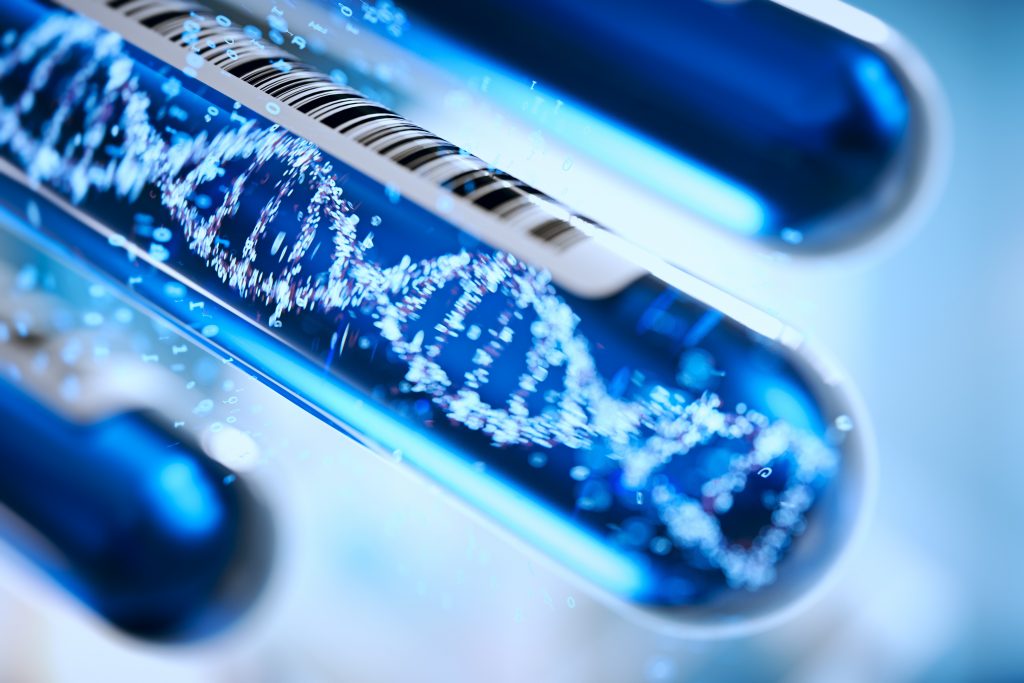
20,000 and You: Unlocking the Genetic Code
In just the past few years, there has been a significant shift in the practical uses of genetic testing, which examines changes, or variants, in your genes that may lead to illness or disease. Once considered more of an investment in the future and less applicable to individual patient care, opportunities to guide health and lifestyle decisions in the here and now may be tantalizingly close at hand.
“Genetic testing is progressing from an occasionally deployed diagnostic tool to becoming the new founding architecture of a personal health record, and may ultimately become a vital addition to a patient’s clinical portfolio,” explains Calum MacRae, MD, geneticist, Chief of Cardiovascular Medicine at Brigham and Women’s Hospital and in private practice at Boston’s AllCare Medical, whose decades-long focus has been on how to systematically implement genomics discoveries into clinical care.
In broad strokes, three areas are identified through genetic testing: disease carrier states for genes, important to the patient’s immediate family; inherited diseases such as heart disease or cancer; and an emerging predictive utility for drug responses and risk of common diseases. This information forms the foundation of personalized medicine, targeted to a patient’s specific genetic profile. According to Dr. MacRae, a holistic approach will optimize the enormous potential of genetic testing, allowing physicians to engage all their patients to understand their own genomes and build collaborative plans for lifestyle modification, nutritional choices and medications that may prevent or delay disease.
Direct-to-consumer (DTC) testing such as 23andMe has become ever more mainstream and is predicted to grow to a $340 million industry in the next five years. In fact, earlier this year, the FDA began allowing 23andMe to provide DTC testing for increased risk of 10 conditions, including celiac disease, hereditary hemochromatosis, Parkinson’s, alpha-1 antitrypsin deficiency and late-onset Alzheimer’s disease.
However, experts cast a wary eye on DTC testing for a number of reasons. Genetic testing is highly technical and complex and it is still hard to predict who will actually develop common diseases such as diabetes, hypertension, and many cancers from genes alone. For many conditions, a negative DTC test result does not necessarily guarantee low risk because it is believed to be the interaction of complex environmental factors with genes that cause disease. That means all information must be considered in the context of a patient’s environment, lifestyle and family medical history, ideally explored during a one-to-one consultation with a primary care physician.
While there is still much to be uncovered, there is no denying the desire to incorporate personalized medicine in clinical practice is increasing. Scientists are beginning to understand the interplay of genes and environment on disease for about one third of the roughly 20,000 genes we all possess, and the portfolio of knowledge continues to grow rapidly. Even more comprehensive tests that examine numerous genes and variants in an individual’s exome (the protein-making part of the gene), known as next generationgeneration sequencing, will gradually become accessible as the costs associated with them continue to fall. Technologies that enable scientists to alter an organism’s DNA (see below) are being refined. With every advance, we may come closer to realizing the vision of Dr. J. Craig Venter, one of the primary forces behind the original Human Genome project, who said in 2015: “I’m hoping that these next 20 years will show what we did 20 years ago in sequencing the first human genome was the beginning of the health revolution that will have more positive impact in people’s lives than any other health event in history.”
Coming to Terms with Genetic Testing
- Chromosomal microarray: looks for genetic changes in the genome, sometimes caused by an existing medical condition.
- Genome editing: technologies that enable scientists to change an organism’s DNA by adding, removing or altering genetic materials at particular locations in the genome. Gaining favor is the newest CRISPR technology, less expensive and more accurate than other genome editing methods.
- Single nucleotide polymorphisms or SNPs: the most common type of genetic variation among
people. They can act as biological markers, helping locate genes associated with disease, and may help predict an individual’s response to certain drugs, susceptibility to environmental factors such as toxins and risk of developing particular diseases. SNPs can also be used to track inheritance of disease genes within families.
- Genotyping panels of selected susceptibility variants: often used in DTC genetic tests, and include SNPs that have been associated with common, complex diseases such as type 2 diabetes, autoimmune disease and metabolic traits.
- Specific single gene tests: performed as part of a focused risk evaluation for heritable disease or for diagnostic considerations e.g. BRCA1 and BRCA2 gene sequencing for carrier identification in at-risk individuals with a strong family history of breast cancer.
Source: Up to Date
The post Genetic Testing and Your Health appeared first on Specialdocs Consultants.
by Specialdocs Consultants, LLC | Nov 20, 2017 | Nutrition, Patient News
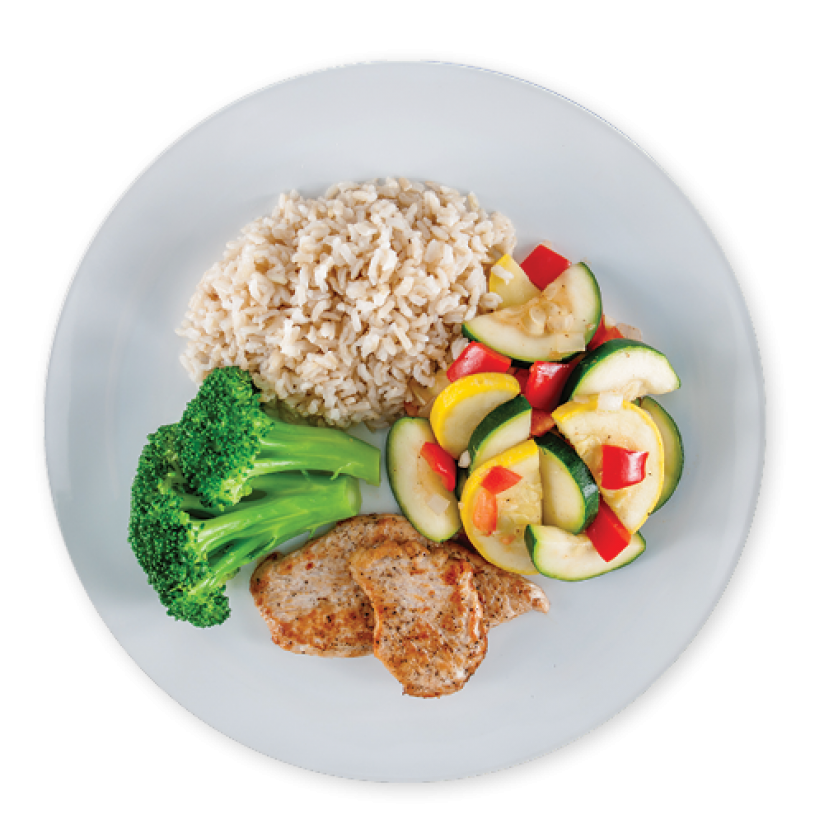
Nutritionists Weigh in on Healthy Eating
Picturing a healthy meal has never been more accessible, thanks to the ubiquity of visual aids such as MyPlate, successor to the well-known Food Pyramid of the ‘90s. A quick scan of the plate’s quadrants enables users to see at a glance proportions of vegetables, proteins and other foods recommended for a nutritionally balanced day of healthy eating. Hailed as a significant breakthrough when it debuted in 2010, for many dietitians and health experts, MyPlate did not go far enough in revamping the American diet.
For instance, Harvard’s Healthy Eating Plate limited red meats but not healthy oils, while the American Institute of Cancer Research’s New American Plate relied even more heavily on vegetables and fruits, accounting for fully two thirds of the plate. The most recent federal guidelines, just issued for 2015-2020, now emphasize shifts needed to choose nutrient-dense foods and beverages in place of less healthy options, and the interconnected relationships between each dietary component. Illustrated at right are what a healthy, and even healthier meal, can look like at your table this year.
MyPlate breaks it down:
- A variety of vegetables from all of the subgroups—dark green, red and orange, legumes (beans and peas), starchy, and other
- Fruits, especially whole fruits
- Grains, at least half of which are whole grains
- Fat-free or low-fat dairy, including milk, yogurt, cheese and/or fortified soy beverages
- A variety of protein foods, including seafood, lean meats and poultry, eggs, legumes (beans and peas), and nuts, seeds and soy products
- Oils
- Limited saturated fats and trans fats, added sugars and sodium (less than 2,300 milligrams per day)
- Alcohol in moderation, up to one drink per day for women and up to two drinks per day for men
- Physical activity: Weekly, strive for 150 minutes of moderate intensity activity (brisk walking) and 75 minutes of vigorous intensity aerobic activity (swimming laps)
The American Institute of Cancer Research (AICR) offers a portion-controlled diet based on fruits, vegetables, whole grains and other plant-based foods that provide an array of cancer-protective compounds while serving as powerful weight-management tool. According to the AICR, the fiber and water in plant foods gives a feeling of satiety with a minimum of calories. Their main message: maintaining a healthy weight is one of the most important steps you can take to reduce your risk of cancer.
The post Healthy Eating: From Food Pyramid to MyPlate appeared first on Specialdocs Consultants.








Recent Comments